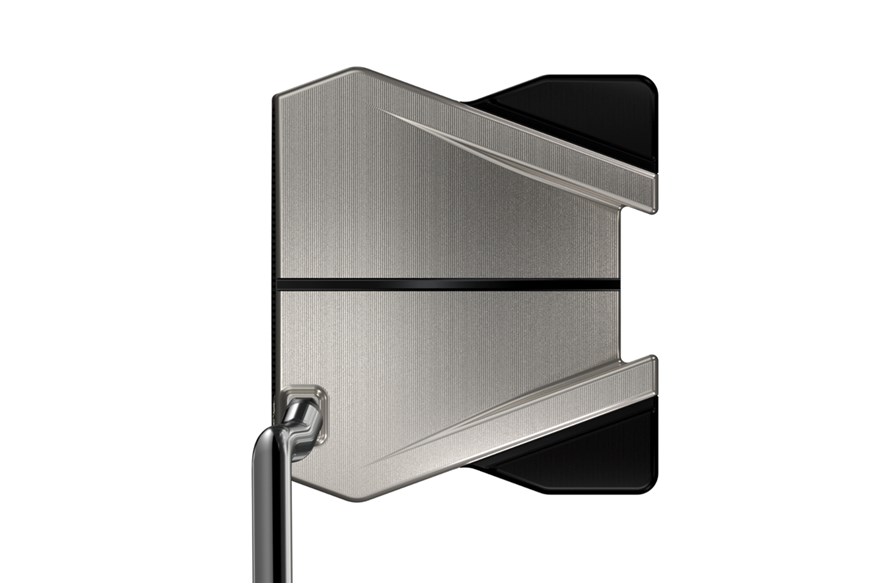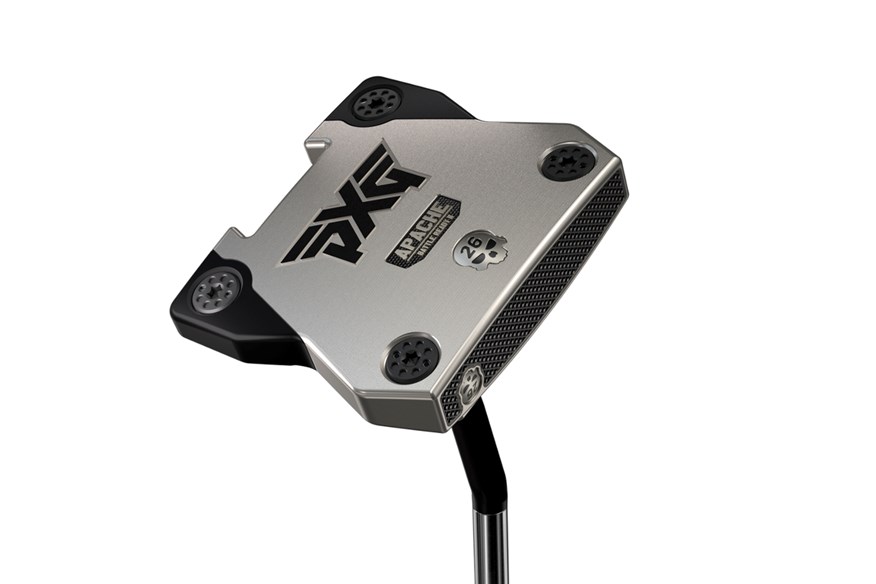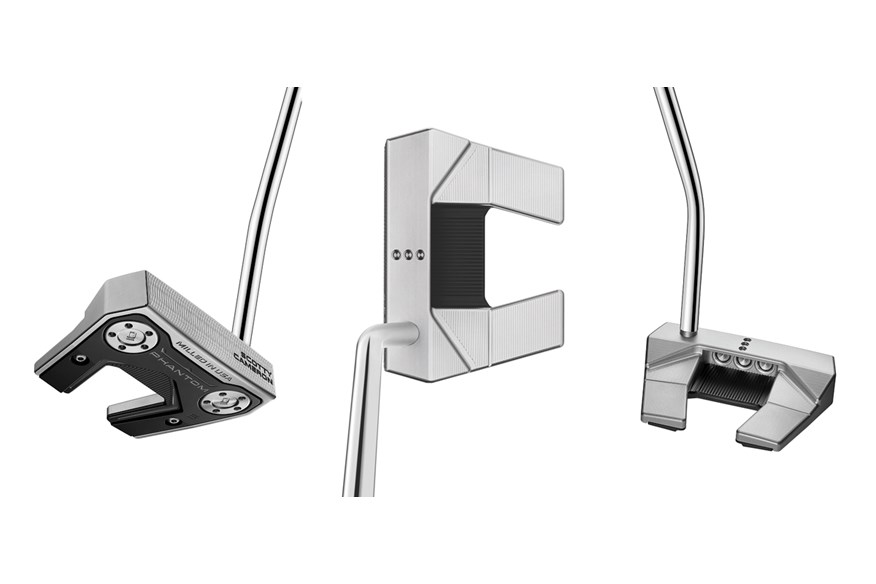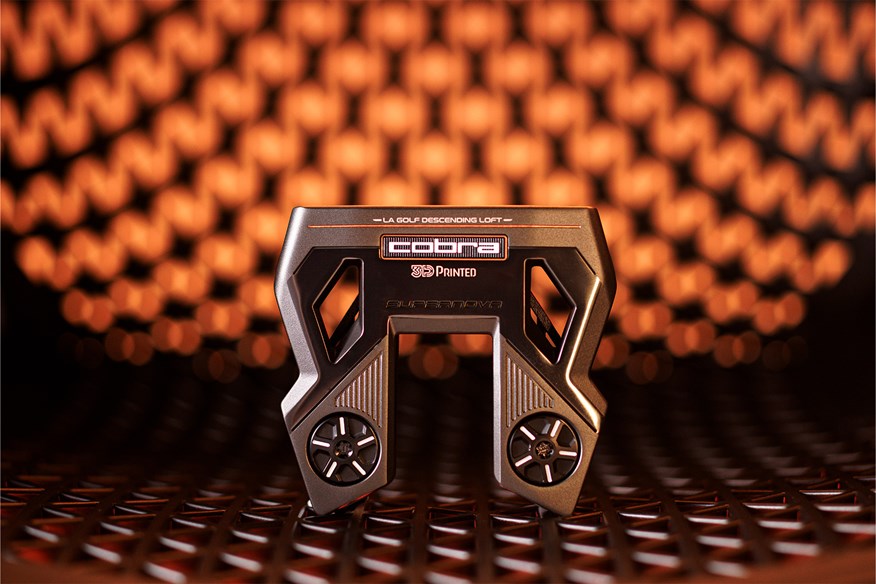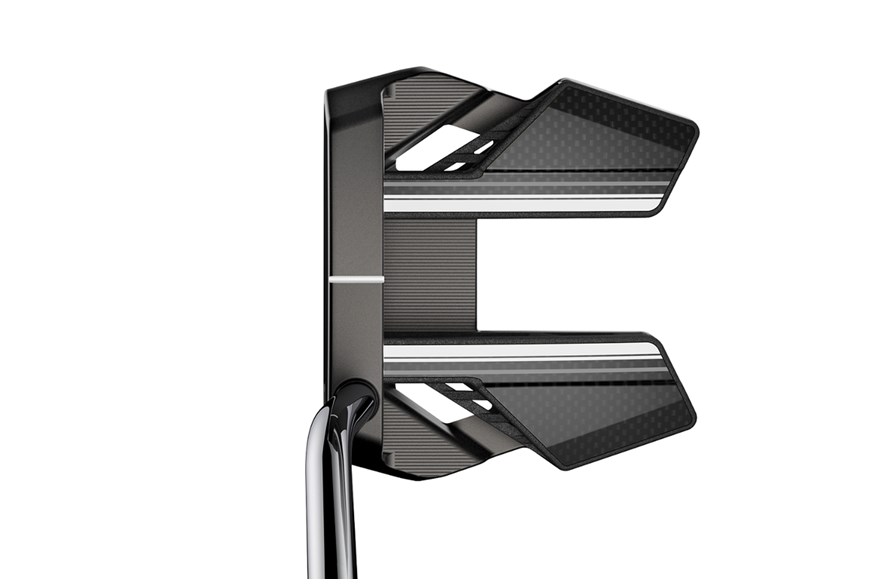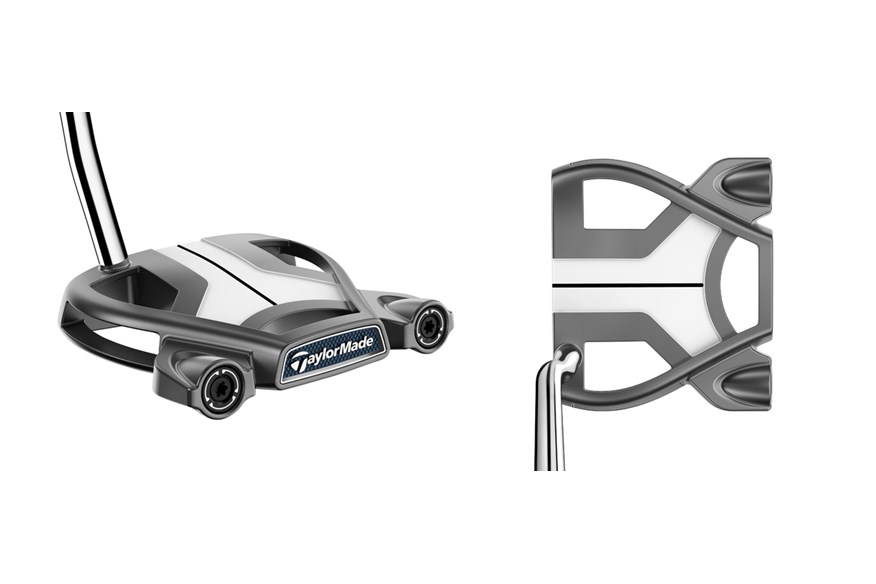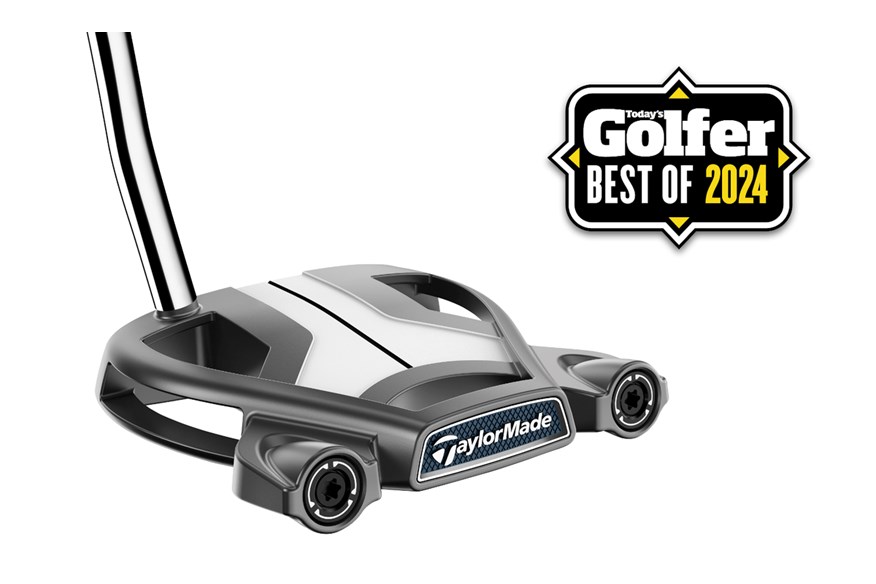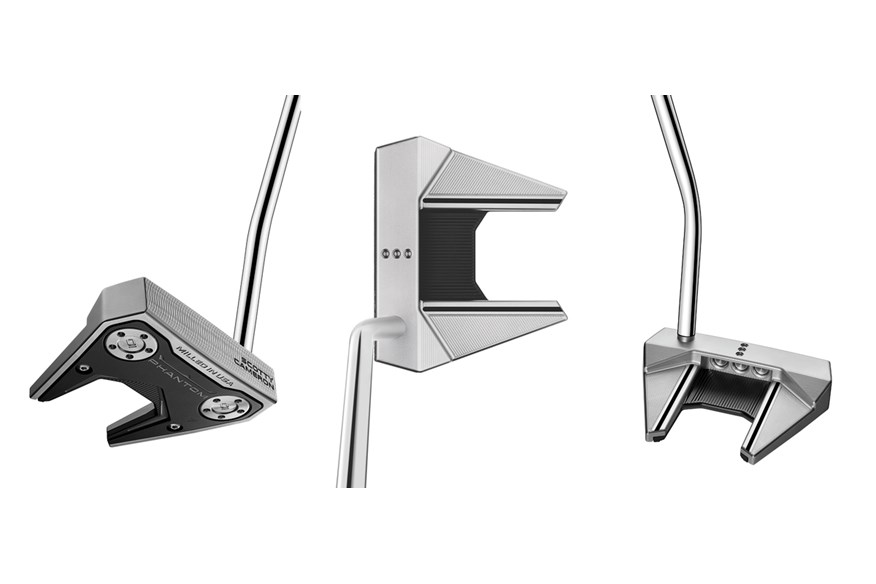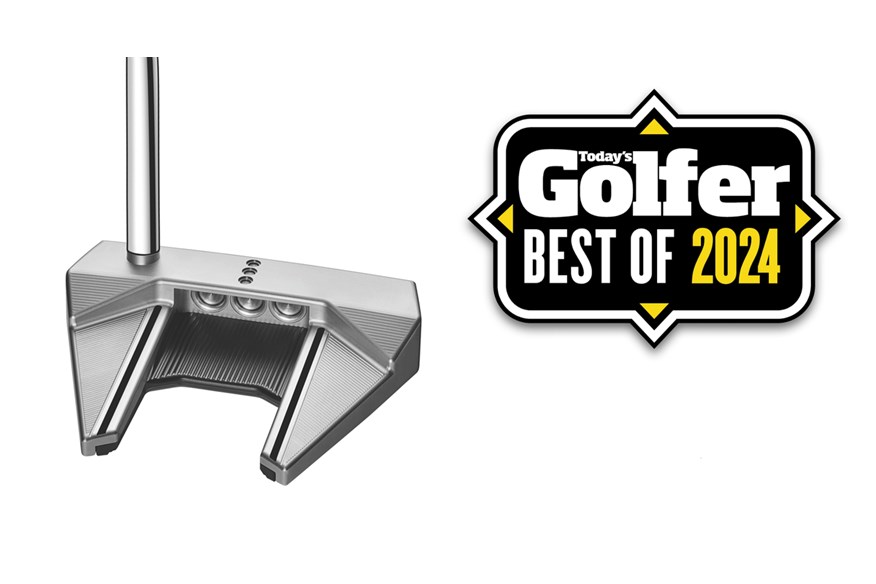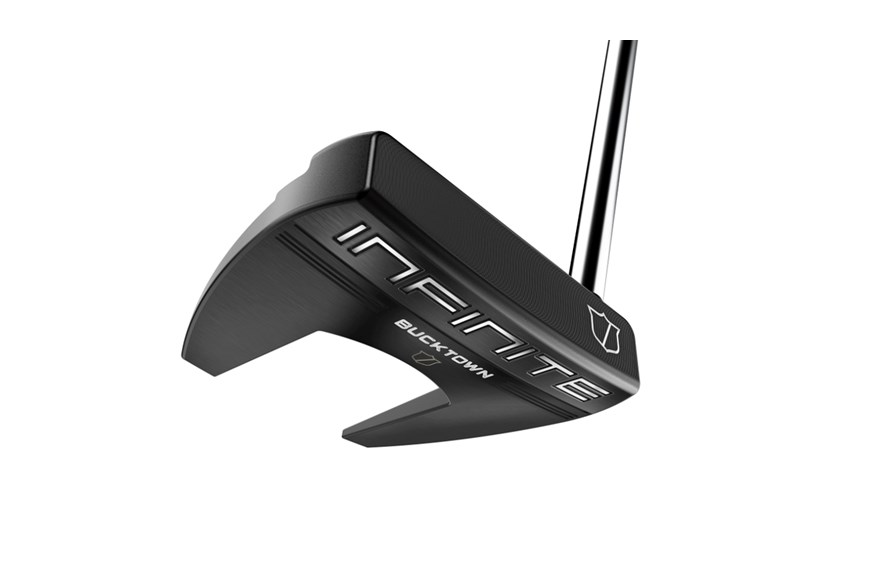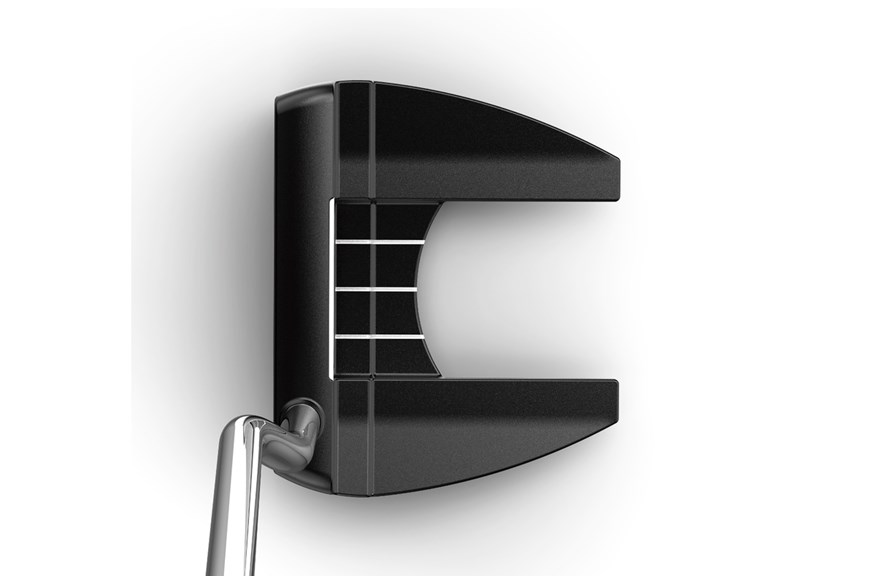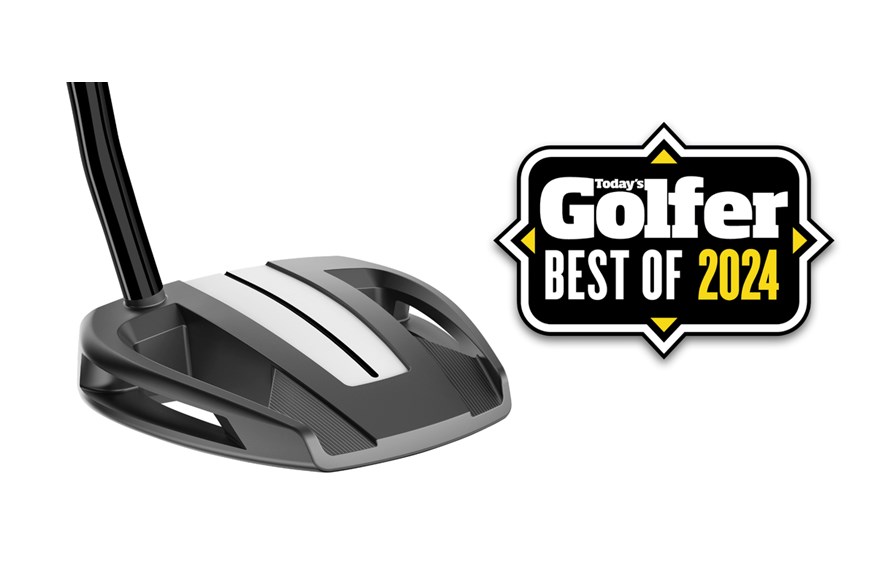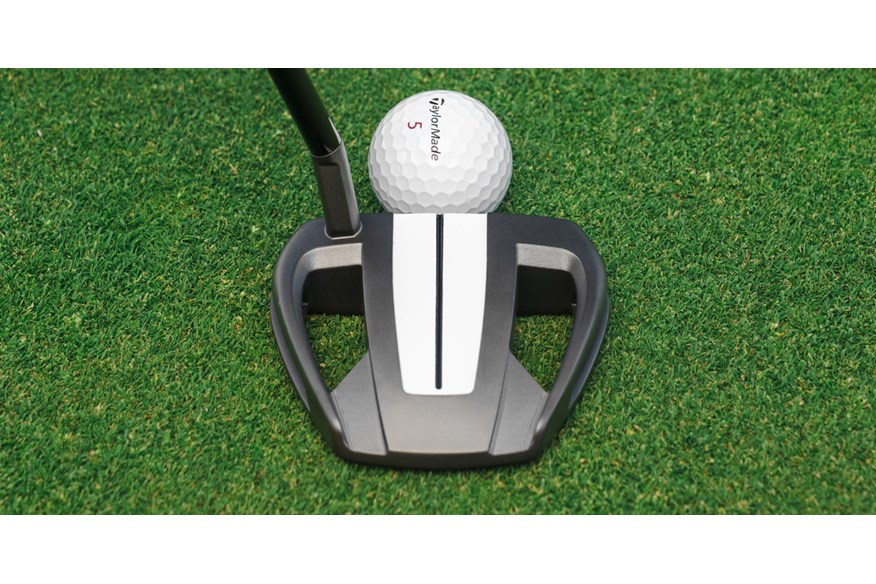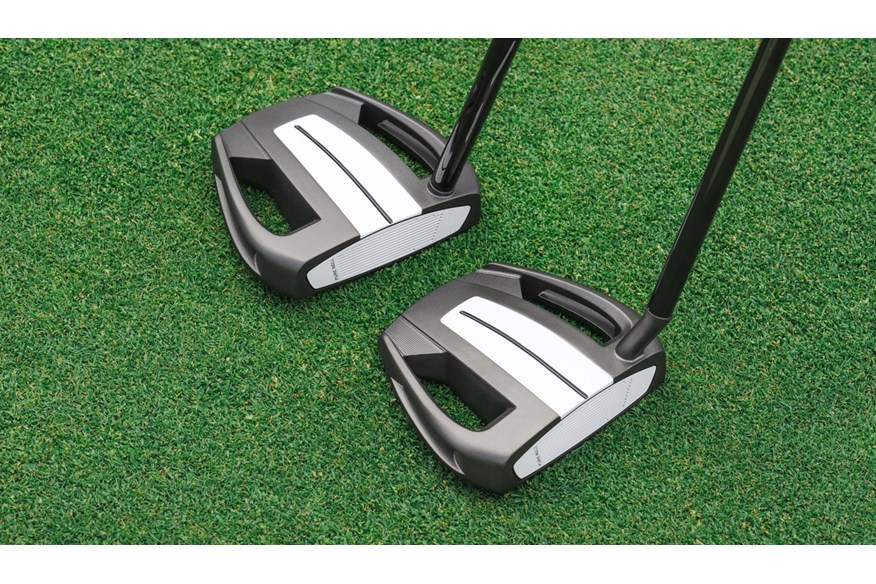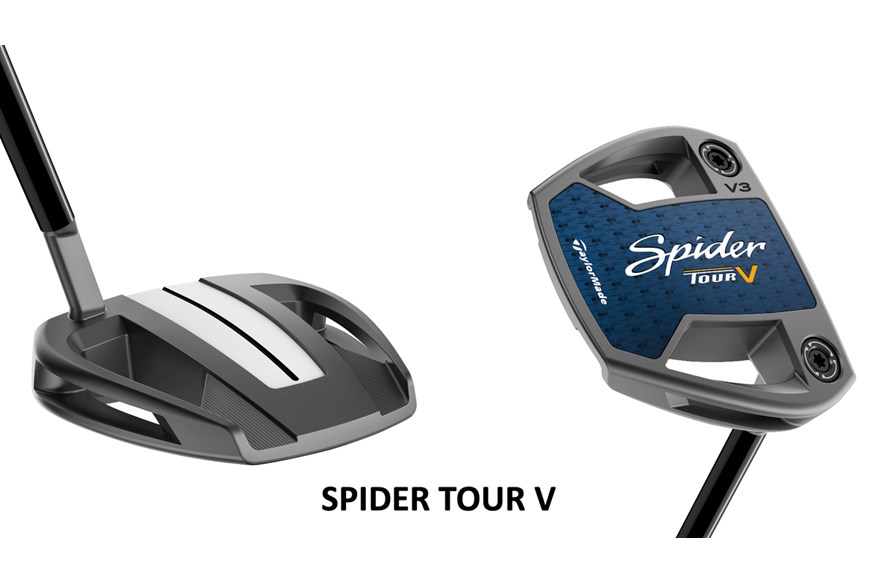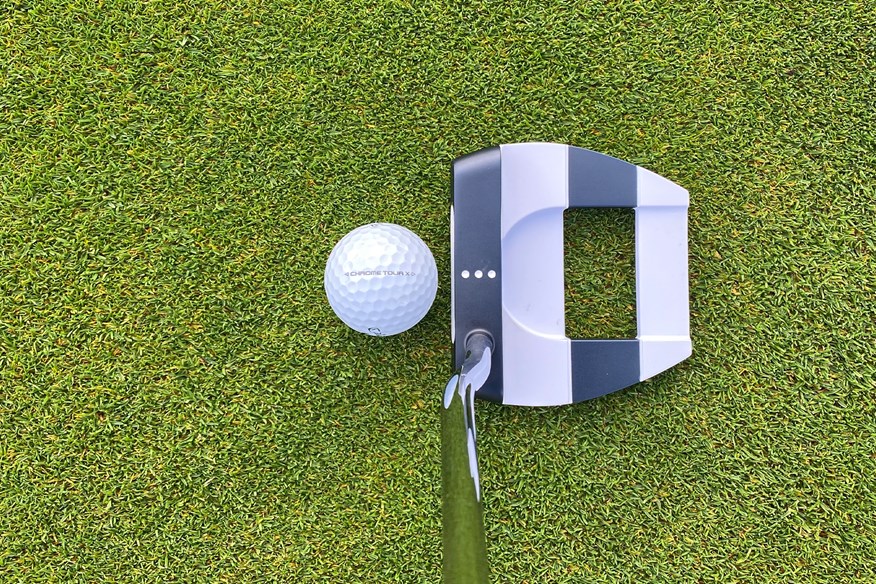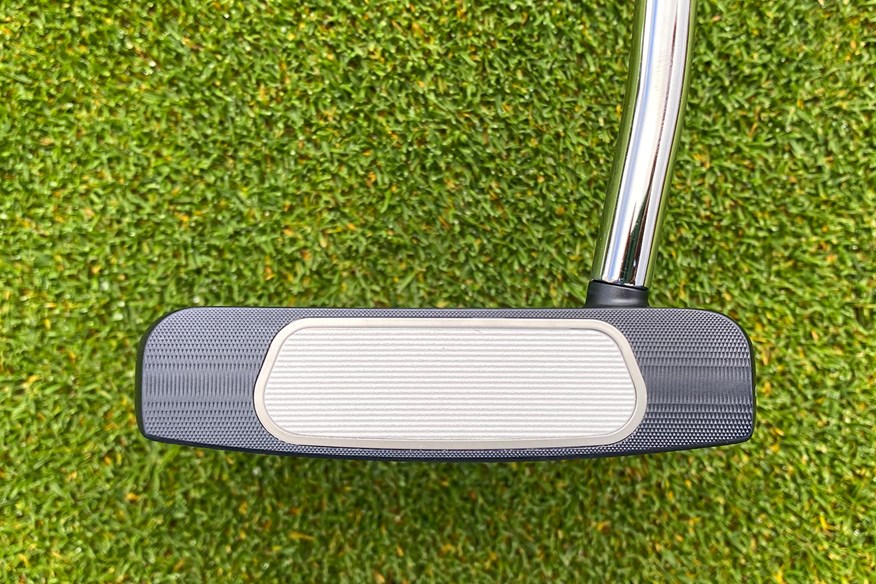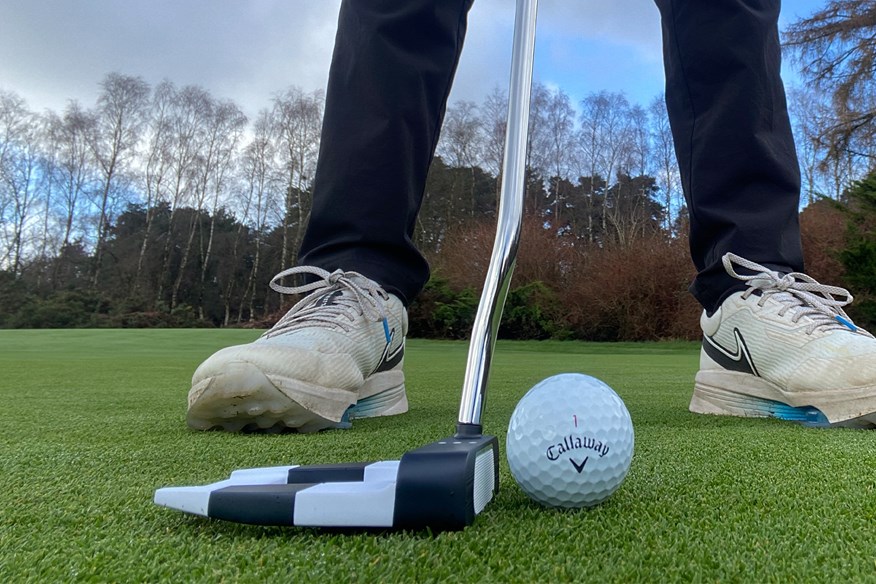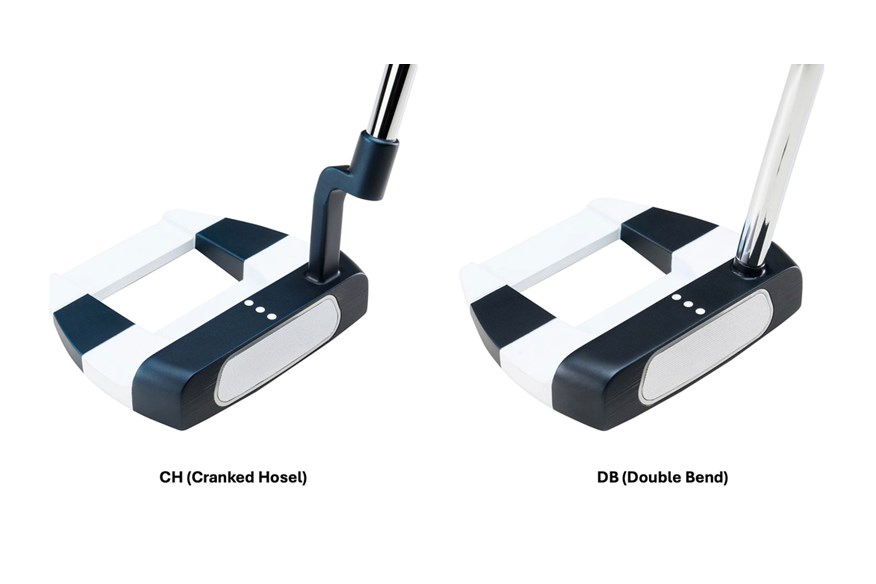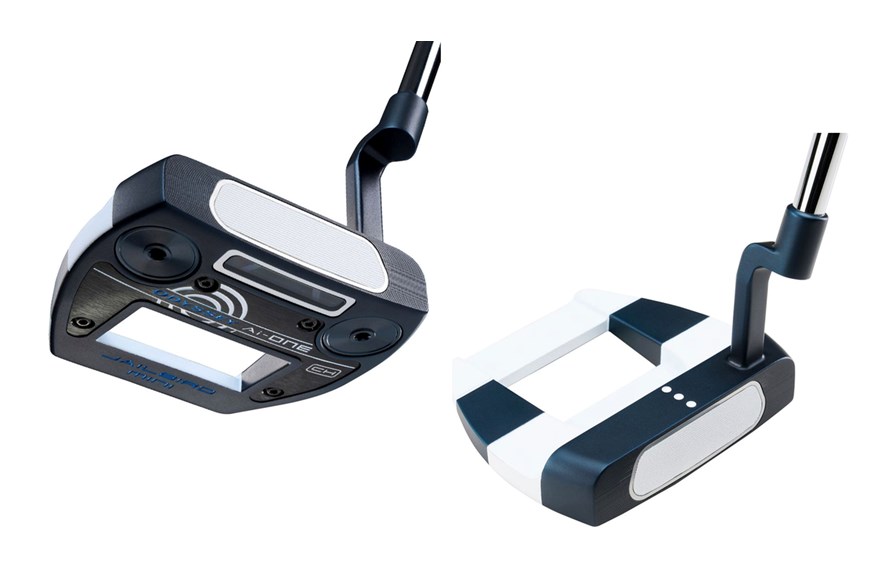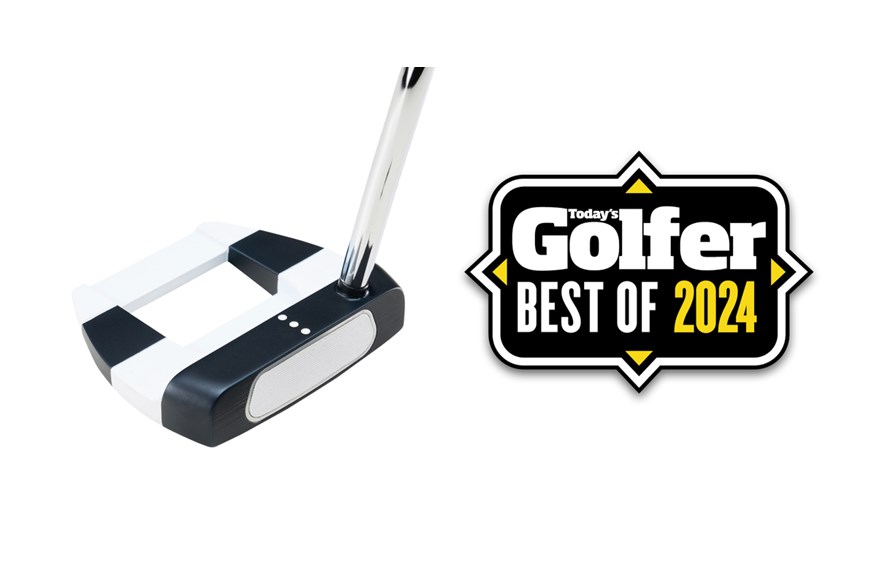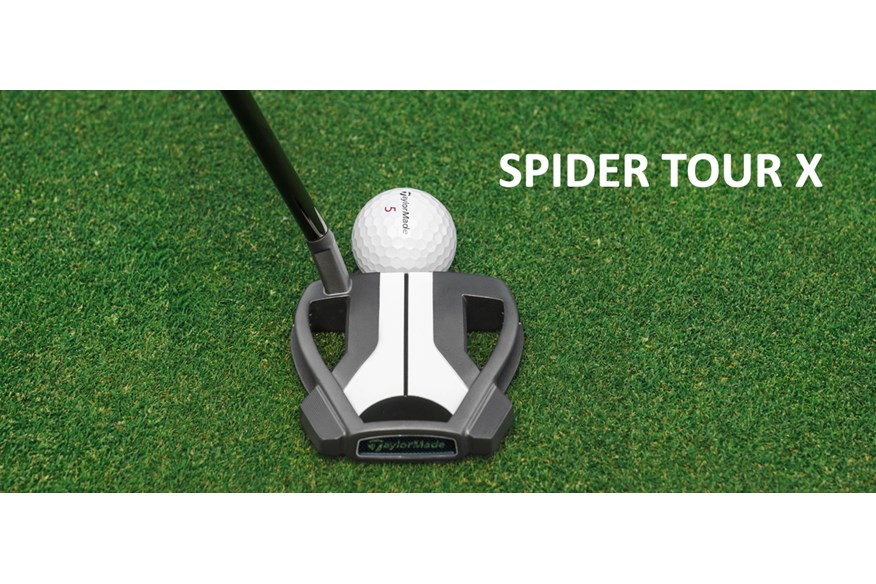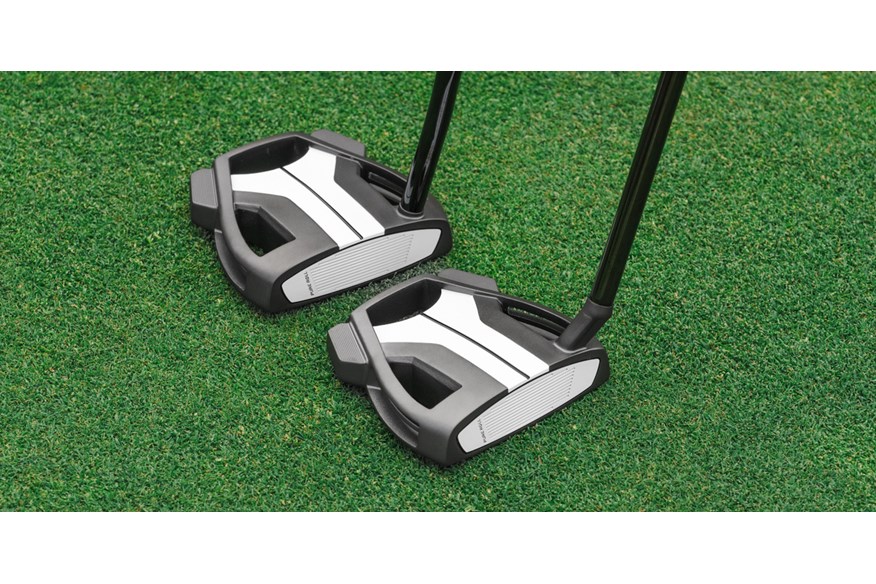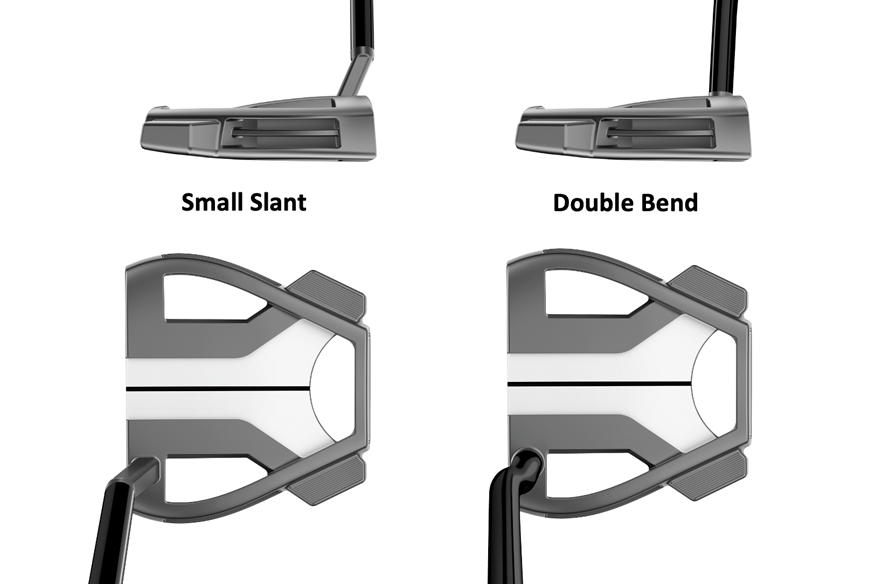Most Forgiving Putter 2025: The super-stable sticks to get you sinking more putts
Last updated:
Today’s Golfer test and review the highest MOI putters to keep your ball rolling straight and true.
Being able to consistently knock short putts in and lag long putts close is the secret to perfecting the art of putting and shooting lower scores more often. Finding your most forgiving putter will help minimize the impact of imperfect strokes and strikes, increasing distance control and accuracy, just promise yourself once you’ve found a flatstick that works never let it go.
If like most of us, you don’t currently love your flatstick or feel you own the best putter for your game, as yours is always misbehaving and missing putts so you’re considering a switch it’s well worth stacking things in your favor and looking at some of the most forgiving putters on the market. Forgiving putters can boast twice as much MOI (Moment of Inertia – resistance to twisting) as the best blade putters, and some of the smaller body best mallet putters. This extra stability means off-center hits create less twist at impact, so putts lose less pace and travel similar distances to on-center hits, they can also be more accurate, which increases consistency.
As always, to maximise your potential on the greens I’d advise taking the time to get properly fit and ask your local club pro for some coaching tips. If it’s forgiving putters you’re after here’s my guide to best models available in 2025.
Most forgiving putters – Jump to:
- What makes a putter forgiving?
- Are MOI putters more accurate?
- Will a stability shaft improve putter forgiveness?
- Can blade putters be forgiving?
- At a glance – the most forgiving putters
- The most forgiving 2025 putters
- How we tested the most forgiving putters
- Buying Guide
- FAQs
What makes a putter forgiving?
The concept is simple and much like the best irons and best drivers mass is removed from the front and center of the head and replaced further towards the perimeter and away from the face. This simple redeployment of weight makes the putter head more resistant to twisting when putts are hit off-center.
The idea means a wider body MOI style putter like the TaylorMade Spider Tour is more resistant to twisting than a traditional narrow body Scotty Cameron Super Select Newport blade. Brands don’t usually like giving away exact MOI ratings for their putters, but to give an idea of how much more forgiving MOI models can be PXG reckons their high MOI Apache (7717 g cm2 MOI) Battle Ready II model boasts over 69% more forgiveness than the narrow body blade Dagger+.
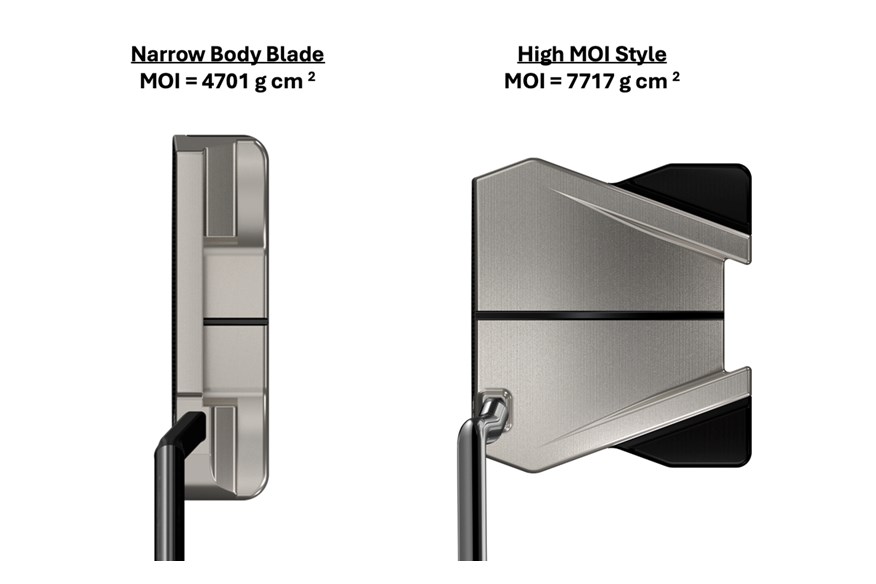
The forgiveness comes about thanks to dragging the center of gravity (the point the head rotates around) further from the face. There is though some debate as to whether high MOI putters are actually more accurate, let me explain.
Are high MOI putters more accurate?
As more tour players like Rory McIlroy and Scottie Scheffler have transitioned into using higher MOI and more forgiving putters, attention has been poured onto creating forgiving putters that offer up the feel and launch of a blade from a higher MOI putter head. It’s meant players and engineers have spent hundreds of hours experimenting with creating a more forward center of gravity location to replicate the traits of a blade including how the putter ‘releases’ through impact.
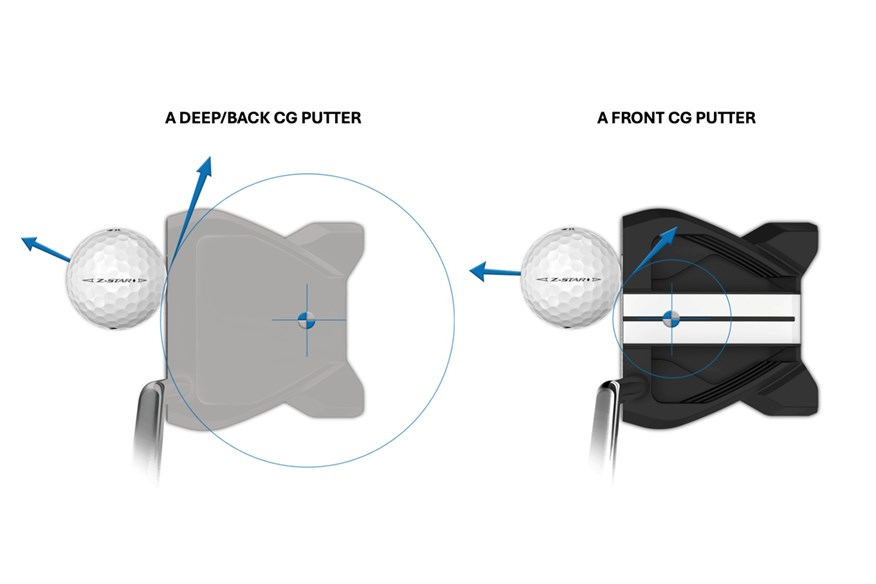
Through this research, engineers have spotted that a deeper center of gravity is great for making the putter more stable and harder to rotate, but when it does twist the head actually turns through a larger arc (as the CG is further from the face) so putts are hit further offline and not as many golfers would expect into a smaller dispersion area.
The Cleveland Frontline putter family is a franchise that specifically targets improved accuracy through a forward or front not back center of gravity. The Frontline has 47g of tungsten split between the toe and heel on the putter face, which drags the center of gravity forward. Cleveland says the idea is so efficient that while a rearward center of gravity putter will miss from 10 feet when hit one-inch off center, the exact same putter with a forward CG will hole out from 15 feet when hit the same distance off center.
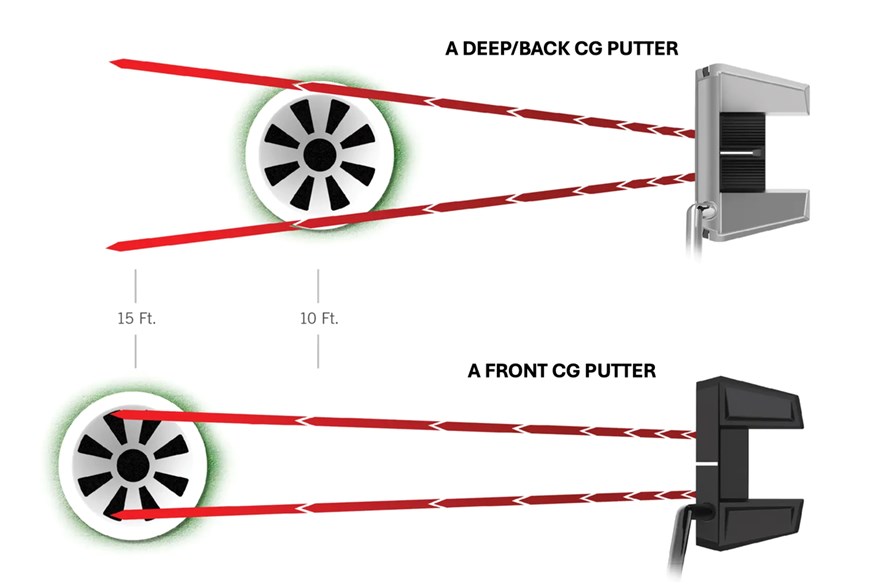
To my mind golfers now have two routes towards either greater forgiveness or improved accuracy control when looking for their most forgiving putter. If like many golfers your putting stroke is wonky and you struggle to repeat the same stroke time and again there is no doubt a high MOI putter will be more stable, and thanks to being more resistant to twisting any such model will require more force to open or close the blade when off-center impacts occur.
If however, your stroke is reasonably reliable and repeatable and you want to focus on improved accuracy (especially inside 15 feet), front-weight forward CG putters like the Cleveland Frontline Elite and TaylorMade Spider FCG are well worth exploring.
Will a stability shaft improve putter forgiveness?
With such a focus on improving stability in putters over the last decade, it’s not surprising attention has turned to putter shafts. Decades ago it wasn’t uncommon for putter makers to fit putters with softer flex shafts, as the idea boosted feel and feedback which golfers often enjoyed.
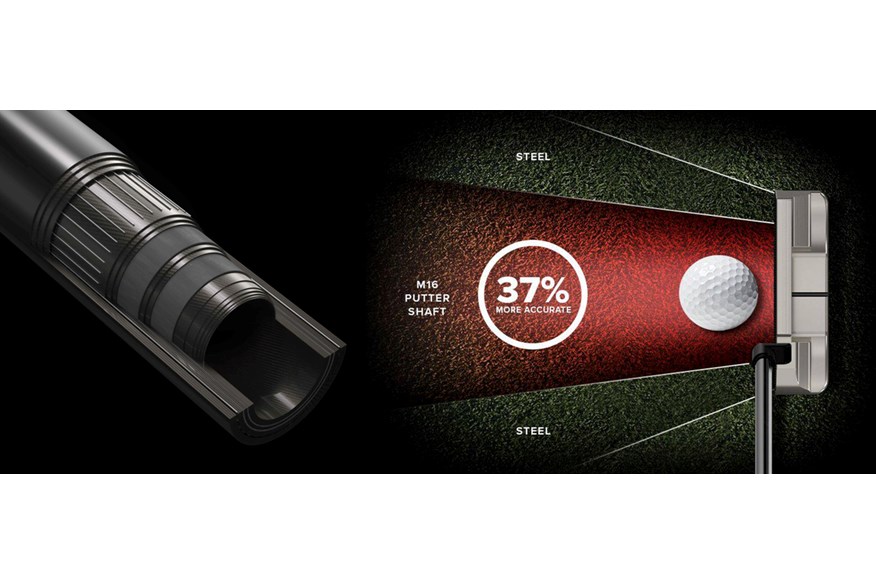
However, softer shafts are also less stable shafts, so over time with the help of launch monitors and slow-speed cameras engineers and designers have learned in greater detail what actually happens at impact. Consequently, there’s been a shift towards lower torque putter shafts that, you’ve got it, twist less.
It’s really easy to scoff at such tech in such a delicate area of the game but when the Fujikura Ventus has become the leading driver and fairway wood shaft on tour thanks to their stability VeloCore+ tips (that boost the MOI of your driver), stability putter shafts like the M16 from PXG and KBS GPS are well worth exploring if you’re out to create your ultimate flatstick.
Can blade putters be forgiving?
Blade and forgiving were two words never uttered in the same sentence. Things have changed a little bit recently though. Yes, Karsten Solheim (the founder of Ping) introduced a degree of forgiveness to blade putters back in the late 60s when he created the cavity back Anser (with toe and heel weighting), but a new Wide Body Blade putter trend has emerged over more recent years.
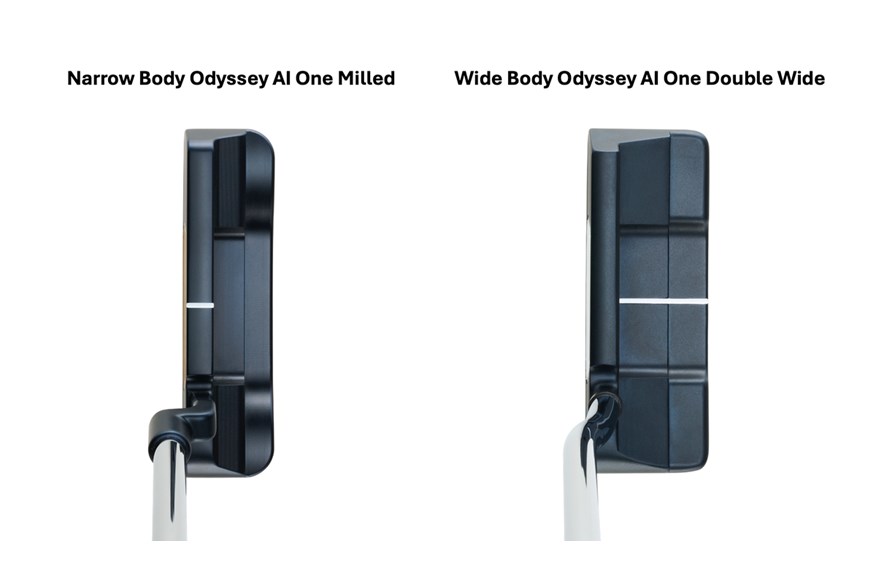
Wide Body Blade putters will never be as forgiving as high MOI models but from the data I’ve seen models like the Odyssey AI One Double Wide are likely to boast 10% more MOI forgiveness over a narrower traditional blade. In my opinion, they’re well worth considering if blade-shaped putters fit your eye more comfortably than larger MOI models.
Most forgiving putters – At a glance:
Most stable MOI putter: PXG Battle Ready II Apache | VIEW OFFER
Best fang style MOI putter: Scotty Cameron Phantom 7 | VIEW OFFER
Best counter-balanced MOI putter: TaylorMade Spider Tour S | VIEW OFFER
Most innovative MOI putter: Cobra 3D Printed Supernova | VIEW OFFER
Best MOI putter for feel: Evnroll EV5.1 Black | VIEW OFFER
Best MOI putter for alignment: Odyssey Ai One Jailbird Mini | VIEW OFFER
Best tour-approved MOI putter: TaylorMade Spider Tour X | VIEW OFFER
Best wingback MOI putter: Scotty Cameron Phantom 5: VIEW OFFER
Best value for money MOI putter: Wilson Infinite Bucktown | VIEW OFFER
Best compact MOI putter: TaylorMade Spider Tour V | VIEW OFFER
Most stable blade putter: Odyssey AI One Double Wide | VIEW OFFER
How we tested the most forgiving putters
To help you find the most forgiving putter for your game, we’ve tested the highest MOI models from the leading brands on the market.
TG Equipment Editor Simon Daddow and Test Pro Neil Wain both putted to a hole 15 feet away and hit at least 20 putts with each model tested. We’re listening for sound, looking for how putts roll across the surface of the green, and gauging the feel and feedback of the putter face. We consider the grip size, shape, and texture, whilst also paying attention to the shaft and the stability on off-center hits.
While we normally share all the data from our golf club tests, we don’t do that with putters. Whilst we do use a Foresight GC Quad launch monitor in putting mode to measure and gauge the roll, topspin, and skid of every putt hit, over the years we’ve learned that putting data is more player- and day-dependent than any other club in the bag. So, whilst we use this data for analysis, we don’t base big decisions or recommendations on it, as history shows data is very likely to be different on another day’s testing. Essentially, we’re not comfortable making huge claims that one putter rolls better than another, because we know that on another day’s testing, the roles could be reversed.
You can read all about how TG tests golf equipment here.
The Most Forgiving Putters 2025:
A super stable putter for those who need as much help as they can get.
It makes perfect sense after seeing such success with hollow-body iron tech, which allows engineers to create a blade-type look with the playability of a cavity back, the same idea be transferred over to making forgiving hollow-body putters. If stability and forgiveness are your aim in 2025 you simply have to check out PXG’s Battle Ready 2 Apache, it's a beast.
Yes, the model has a really big head size which you will notice at address, but it’s also a very sleek shape, without too many angles to confuse the eye. I also love how like most PXG putters it’s also available in four different hosel options, which allows all of us to choose how much toe hang our putter has, which simply isn’t an option from most mainstream putter makers.
I love the Apache's bold single sightline, it’s the height of simplicity, I also really like how the black back wings are cleverly disguised to hide their size and shape. This is a very cleverly designed putter that looks great in the play position, thanks to the hollow body and internal polymer it doesn't sound and feel half bad either.
The cherry on top though has to be the Apache’s massive MOI. While many putter makers don’t like publishing MOI data for their flat sticks, the Apache comes in at 7717g cm2. That’s 35.4% higher than TaylorMade’s legendary Spider Tour and 27.5% higher than the same brand's bigger footprint counter-balanced Spider S. All of which will be music to the ears of golfers who want a super stable putter.
Read our full PXG Battle Ready II Apache Putter review.
Pros
- Incredibly stable
- Lots of hosel options to get toe hang to suit your stroke
- Clean and simple design
Cons
- Large head size won't suit everyone's eye
A Scotty Cameron for those who want plenty of stability and forgiveness.
It’s taken Scotty Cameron decades to become a major player in the MOI putter market but 2024 marked his arrival on the scene with a bang. It’s no coincidence the flat stick legend has just recruited Austie Rollinson of Odyssey mallet and alignment aid fame at a time when he’s looking to blow the MOI putter market wide open.
Admittedly the Phantom 5 isn’t massively different in shape and design from the preceding Phantom X 5 but its refined fang-shaped head has been very cleverly designed to throw attention onto the impact position, which to my mind will be a huge hit with CNC Milled MOI putter fans. Where lots of modern fang back putters have slender, thin back shaping, the Phantom 5 is much wider and bolder which gives a brilliant sense of stability and off-centre hit forgiveness. For setting up at address I also really like how the face runs parallel to the fang ends at the back of the head, to my mind it's an idea that really heightens the sense of face alignment over more traditional fang-back models.
Our test pro and I loved the feel, feedback, and roll from the Phantom 5; it’s every bit as good as what I’ve experienced from Scotty Super Select blades, with additional impact stability when putts don’t hit the centre of the bat. That of course didn't though mean we holed every putt. During our test sessions, I’ve also been really impressed by the soft smooth texture of the new grip and how its shape fits my hands while transmitting lovely feedback and feel from all ranges.
Scotty Cameron has put a ton of work into getting where he is in the MOI market. Success has not been instant as it was with his beautifully CNC milled toe and heel-weighted blades, but thanks to the 2024 Phantom family I feel the flat stick master is right on the cusp of a wave of owning this market in much the same way he has with CNC Milled blades for decades.
Read our full review of the Scotty Cameron Phantom 5 Putter.
Pros
- Great stability
- Stylish design and finish
- Great feel
Cons
- Scotty purists will want a blade
A clever use of modern technology boosts MOI and forgiveness.
I hear all the time how technology hasn’t really changed in golf for decades as rules limit equipment performance incredibly tightly, but it’s models like the new 3D Printed Supernova that keep challenging this sort of blinkered thinking.
We may be talking tiny amounts of difference but a lightweight 3D-printed polymer lattice inside the Supernova’s head removes inefficient weight so more mass is positioned around the head to increase MOI and forgiveness. And even if that only means you hole a couple more putts per round or reduce your three-putt percentage slightly, the Supernova becomes a very worthwhile investment.
We have history with the Supernova here at TG as the original and its predecessor featured among our top-performing MOI putters for two years in a row.
This time around the head shape has been refined a little and there’s carbon fibre to remove even more weight from high up in the head.
I really like the combination of the sightline on the top rail and the two bold white lines that frame the golf ball's width at address, even though I completely appreciate some golfers will likely find the head's multiple angles and different material finishes slightly distracting.
Cobra makes a big deal about using LA Golf’s Descending Loft Technology to get putts rolling quicker and more smoothly, from my experience though I struggled to see a real tangible difference using this model. That doesn’t mean it won’t help in your quest to hole more putts more often, just don’t expect to instantly see a huge difference in the skid and roll performance of putts out on the golf course.
For £299 in the current market, the Supernova is a huge amount of putter for the money, there is serious amounts of work tied up in making this head. I love the feel, feedback, and super stability set-up, hence why the model features among my top-performing MOI putters of 2025.
Read our full review of the Cobra 3D Printed Supernova Putter.
Pros
- Cutting edge technology
- Very stable
- Great forgiveness on off-center strikes
Cons
- The busy head cosmetics may be distracting
A super stable putter tour pros love.
Brian Harman also hit the jackpot with the franchise at the 2023 Open Championship. The American's win was significant though as the putter he used was not only an oversized Spider model but also a counter-balanced one. With mass positioned above the hands inside the putter shaft, which increases stability, Harman putted the lights out in Hoylake. As did Wyndham Clark at the 2023 US Open (with an Odyssey Versa Jailbird), and Rickie Fowler, who regained his mojo – all three players used counter-balanced putters.
Needless to say, counter-balanced putters are hot real estate right now. Putter brands have fallen over themselves over the last six months to get new models to market quickly, as golfers have literally been screaming out to try counter-balanced models all over again.
The Spider S is TaylorMade’s counter-balanced offering for 2025 and I absolutely adore it. The iconic head shape is perfect as the foundation of a counter-balanced putter model. The head is renowned for being incredibly stable as mass is freed up from the centre and relocated to the perimeter. And this is a seriously well-respected shape and tour-validated model.
To nudge up MOI and forgiveness even further I love that TaylorMade have stretched the footprint by 3mm from toe to heel and added an additional 8mm from face to back, which to my eye really boosts confidence standing over knee-knocking putts. The size difference is really noticeable at address and as you swing the putter as the overall feeling is one of incredible stability, a trait that lots of golfers could benefit from in their putting stroke.
The real win for me though with the Spider Tour S is how the model is available at both 35” and 38” lengths, whereas the major competition from the Odyssey Ai One Cruiser family comes in one length only (38”).
I’ve tried over-length counter-balanced putters before at 38” lengths and found they have a tendency to feel really unwieldy and get caught up in clothing as being under six foot tall they were never really designed for me. Where at 35”, an inch longer than my typical putter, I get all the benefits of additional overall stability, along with an MOI head shape that is second to none, a set-up which makes the Spider S an absolute winner in the MOI category this year.
Throw into the mix a lovely long alignment line that looks great sat behind a golf ball with an alignment stripe, a responsive face insert that grabs and grips putts into a lovely smooth roll across the surface of the green, and a completely non-offensive but more durable gunmetal PVD finish, and you have the best MOI counter-balanced putter of 2025. If a more stable putter is on your agenda in 2025, do yourself a favor and start here. I promise you won’t be disappointed as Counter-Balanced putters are much easier to transition into over the best armlock models.
Read our full review of the TaylorMade Spider Tour S Putter.
Pros
- Very stable
- Extremely forgiving
- Great for alignment
Cons
- Quite busy to look down on
A gorgeous wingback that will never go out of fashion.
Angular wingback putters like the Phantom 7 are available all over nowadays but Cameron’s offering stands out as it’s beautifully proportioned and finished. I’m drawn to the model as the long alignment lines that frame the ball at address also highlight the straighter path I like to swing the putter along. For me, they also channel focus onto the area you're trying to impact putts, which is really comforting. For straighter stroke players this model is an absolute dream. If your stroke has more arc the Phantom 5 will be a better fit with its extra toe hang.
To use this model successfully you will need to accept the multitude of different lines and angles, the head is filled with them, but they’re no different to what you’ll find on other fang style putters. From my experience the feel, sound, and impact feedback are outstanding from this beautifully engineered model. If you’re looking for a premium stability MOI putter in 2025, the Phantom 7 is a brilliant choice that will hold its value.
If I were spending my own money I’d be weighing the Phantom family up against the TaylorMade Spider putters, as a £130 price difference (thanks to the Spider being cast, where the Phantom is CNC Milled) is a lot to stomach in anybody’s book.
Read our full Scotty Cameron Phantom 7 Putter review.
Pros
- Lovely sound and feel
- Great stability
- Scotty Camerons hold their value
Cons
- More expensive than the TaylorMade Spider for similar performance
A great value-for-money MOI option.
Good value-for-money putters are getting harder to find in the modern world. I always like to highlight at least one such buy in each category, as we know not everyone wants to blow hundreds on a new putter.
Wilson’s Infinite family has stood out for a few years now in the budget field, and the whole range has been relaunched for 2024.
You don’t get hosel choices or changeable weight set-ups, nor a milled head or soft face insert, but the Bucktown is still a strong modern fang/MOI putter for reasonable money. Expect a slightly firmer feel off the putter face, as there's no soft urethane face insert, but from my test sessions I believe the responsiveness and how putts launch is perfect for most of the golf season in the UK, where greens are typically a fraction slower.
Putter grips are really personal pieces of equipment. Neil our test pro and I both liked the midsized stock model on the Bucktown as the V-shaped back sits comfortably in the creases of the fingers, giving an excellent gauge of where the putter face is pointing directly to your palms.
If you’re drawn to the Bucktown, make sure the face-balanced set-up suits you: it typically works best for straighter strokes.
The Infinite family runs to multiple models, so should you find yourself wanting a more traditionally shaped blade or mallet, Wilson have other decent options, too.
Pros
- Fantastic value for money
- Great for straight putting strokes
- Multiple models to choose from
Cons
- Less premium build
A great MOI model for those who don't want a chunky putter head.
Where the Spider Tour’s siblings all have protruding weights around the back perimeter, this model is super clean and easy to look at when standing over putts. There are no angles or additional shapes to draw or distract the eye to the back of the putter head at address, which also means a slightly lower MOI. Remember though cosmetics play an important role in deciding whether many decent golfers will put a new putter in play or not.
With a center of gravity location just 27mm from the face (the smallest of the Spider Tour family), expect a substantial 32° toe hang, and a Spider putter that feels and behaves like a blade (the reason why lots of tour pros switch to Spider models). That should definitely be a consideration if you’re transitioning into MOI putters from a blade, as this setup will be more similar to what you're used to.
If you’re really sensitive to the feel of putters, I believe the Spider's surlyn and aluminum combo works great with different golf ball compressions and cover materials. Particularly as some soft insert putters can feel very spongy if you also play very soft golf balls. With a Spider model to cover all wants and desires in the MOI market in 2025, the franchise is very difficult to overlook this year.
Check out the best TaylorMade putters or read our full TaylorMade Spider Tour V Putter review.
Pros
- Sleek package
- Feels almost like a blade
- Great for those with an arced stroke
Cons
- Not as stable as some bigger putters
A fantastic combination of blade feel with roll and stability tech built in.
Best MOI Putter For Feel


If you’ve felt in the past that MOI putters have had a reputation for being a bit cumbersome, distracting, or just not being all that appealing, the EV 5.1 is the model that will change your mind. Our test sample came with a full blacked-out finish, which gave this modern wing-back head a super simple unfussy look at address and a smaller overall appearance.
If you use an alignment stripe on your golf ball, the EV single sightline looks great sat behind it, and thanks to the contrast between the black and white finish it’s really good for focusing attention on the impact zone while also highlighting the alignment of the blade.
I loved the feel and roll performance of this model, I felt I could gauge distance control accurately and consistently. I believe the EV 5.1 combines a blade-like feel with good roll and stability tech, so this model has the capability to get mishit putts closer to the hole more often.
I'm blown away by six toe hang options and a multitude of sole weights, all of which can be arranged to dial in swing weight and toe flow - that's levels of choice that can barely be matched by any putter manufacturer.
If I were spending my own money I'd opt for the stock Tour Tac grip, it's one of my favorites. Expect a brilliant mid-sized pistol shape, with plenty of soft, tacky traction to boost confidence, even on the slickest of surfaces.
Pros
- Looks clean and simple at address
- Great for alignment
- Huge array of options
Cons
- Firm feel won't suit everyone
Hard to beat for alignment and stability.
Golfers went crazy for the original Jailbird after the 2023 US Open, where Rickie Fowler shot the low opening round and Wyndham Clark went on to win using the same nine-year-old model.
Unsurprisingly, Odyssey have reintroduced it in their new 2024 Ai-One family, a move that should reap massive rewards.
I’d love to say our test pro and I noticed the AI face tech helping off-centre putts finish closer to the hole, but that’s incredibly hard to prove.
I'll put my hand up and say despite the ‘21% closer’ claims of the AI face, it didn’t stop me three-putting the first hole I played with my sample. But such a rude start didn’t put me off loving this model.
It’s not rocket science but the black, white, black finish of the Jailbird and having the back edge of the head running parallel to the face, rather than being curved like a mallet, is just like having alignment help on steroids. If you can’t aim this model squarely at your target line, there really isn’t a putter out there that can help.
Admittedly this model is a little smaller than the counter-balanced 38” Jailbird model Rickie Fowler uses, but I believe for many that will be a plus as big MOI heads adorned with this sort of paint job are really in your face.
I love the firm but soft feel of the insert, the roll across the green's surface is superb, and the pistol-shaped grip is a better shape than what the company have made for some time. If it’s alignment and stability help you want in 2025, the Jailbird has all the answers.
Check out the best Odyssey putters or read our full Odyssey Ai One Jailbird Mini Putter review.
Pros
- Great for alignment
- Really nice pistol grip
- Lovely feel
Cons
- Busy design won't suit everyone
The classic MOI putter that changed the game.
Spider putters have played a huge role in convincing many tour pros to ditch their blade putters for more forgiving MOI and mallet-style models over the last decade. This and the previous X models alone can lay claim to helping Rory McIlroy have his best putting season ever and breaking many a scoring record.
TaylorMade relaunched the Tour X at the back end of 2023, and this beautifully put-together model is an excellent option within the MOI arena. I like that, thanks to not having the deepest centre of gravity location (like blade putters) and quite a bit of toe hang, the model is often a really good fit for golfers looking to transition from toe hang blades into more forgiving MOI-style putters.
This head shape is a proven winner, and from my experience while testing it’s a reliable and consistent performer on the dancefloor from distance and close range. I really like the flowing body lines whereas some of the competition adopt much sharper edges and more angular approaches. If there’s such a thing as a classic MOI putter, the Spider Tour X is it.
In previous generations, the X has been an award winner here at TG, and I reckon the new black shaft, refined sound and feel, which is noticeably more muted than the original, and more durable gunmetal PVD finish which won’t chip like previous painted models, elevate the X onto the MOI putter podium once again.
Check out the best TaylorMade putters or read our full TaylorMade Spider Tour X Putter review.
Pros
- Tour-proven over many years
- Pleasing design
- Good forgiveness and stability
Cons
- You can't scoop your ball up with it
This might be the most forgiving blade putter ever made.
Most Stable Blade Putter
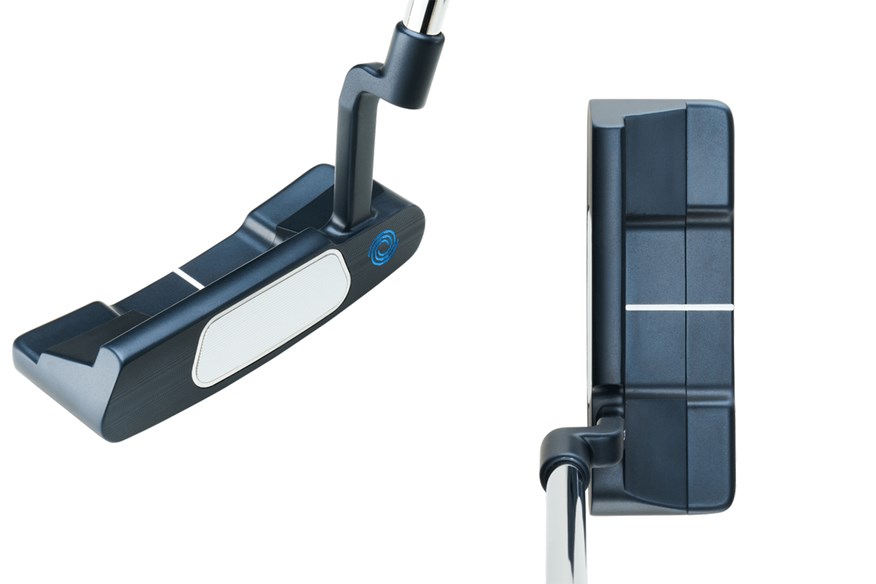

Last year, Odyssey’s Tri-Hot 5K Triple Wide featured among our award-winning blade putters, and this year, thanks to the AI-developed insert helping ensure on- and off-center putts travel the same distance, the AI-One Double Wide takes up the baton.
I've used this putter since attending the Odyssey AI putter launch at PGA Frisco in Texas, USA. I love this head shape with a face-balanced double bend shaft (it's also available with a Cranked Hosel and 37° of toe hang) as I've always liked the look of blade putters but find they're prone to fighting my straight-down-the-line stroke.
I’d love to say Odyssey’s AI family has the capacity to ensure you never three-putt again, but obviously, that’s not true.
That said, Odyssey says their insert will, on average, hit off-center impacts 21% closer to the hole, and when I’ve used the Double Wide I've been really impressed with my distance control. I’ve also holed several pressure putts which might ordinarily have got away. To me, the feel off the face is slightly, firmer and crisper than the brand's iconic White Hot, which is a really good thing if you intend playing year round golf, especially in the UK.
While I can’t specifically put any improvement down to the AI tech the Double Wide head and AI face insert have given me bundles of confidence, which isn’t always the case on the greens.
I’ve seen enough from the AI-One family during our 2025 test pro sessions to say if you’re looking at premium new putters in 2025 – irrespective of whether they’re blade, mallet, or MOI models – and you don’t at least trial an Odyssey AI model, then you’re not doing your game justice.
Check out the best blade putters available or read our full review of the Odyssey Ai One Double Wide Putter.
Pros
- AI-designed face inserts are cutting-edge technology in the putter market.
- Feel and feedback from the aluminum and urethane White Hot insert is a little more lively than the brand's White Hot OG family.
- Very competitively priced.
Cons
- Some golfers will see the lack of a multi-material Stroke Lab as a cost-cutting exercise.
Most Forgiving Putters: Buying Guide
Once you’ve decided that a high MOI putter is the style of flat stick that will take your performance on the greens to the next level, we recommend taking into account the following considerations:
Head design
MOI putters come in a variety of head shapes from circular to square to wingbacked and everything in between. Of course, it’s important that when you look down you like what you see and the putter fills you with confidence, but so too is ensuring the head type provides a sufficient level of stability for your needs. Traditional mallets and modern mallet head shapes typically provide more stability due to their larger profiles that increase MOI, whereas a wingbacked designs offer a blend of precision and stability for those looking for a blade-mallet hybrid design.
Alignment aids
High MOI putters come with a variety of visual aids on top to help you align putts and strike the ball in the middle of the face. It’s all personal preference, so pick up as many putters as you can and see what type of alignment aid suits your eye. If you draw a straight line on your ball, a single line on your putter can be a great accompaniment for that. If you use a triple-track golf ball, a putter with three lines can work brilliantly.
Stroke type / Toe hang
Most putters come with different hosel options, which not only affect the look but also the amount of ‘toe hang’ the putter has. Toe hang is measured in degrees and basically dictates how much the putter wants to rotate during your stroke. Generally, golfers with more arc in their putting stroke will benefit from more toe hang, while those with a ‘straight back and through’ stroke will want less toe hang.
A simple but effective way to see how much toe hang a putter has is to balance the shaft on your finger; the angle at which the head points down towards the ground when hanging freely is the amount of toe hang. A putter with no toe hang is often called “face balanced” and the face will be pointing straight to the sky in the previously described test.
Face type
Putter faces used to be a simple, flat piece of metal, and although some are still like that, most have an insert or some form of groove pattern designed to help reduce skid and get the ball rolling sooner. Finding the face type or insert you like the feel of is key to confidence and consistent pace control.
Length
Putters are typically 33″ to 36″ (discounting arm-lock models, which are longer). The correct length largely depends on your height but also the way you stand when putting; basically, the distance from your wrist to the floor when you address a putt is the length of putter you need.
Grip
Putters traditionally had slim grips, but in the last couple of decades, very thick grips have become extremely popular as they tend to encourage your hands to stay passive, which creates a more stable putter face through the stroke. Check out our guide to the best putter grips.
Budget
With many of the best putters retailing for over $400, it’s important to decide how much you’re willing to spend. After all, a higher price doesn’t guarantee you’ll hole more putts. Typically, the leading manufacturers are at the forefront of R&D and use premium materials, which explains the high price, but there’s nothing to say you can’t find a putter for under $200 that works great for you.

Most Forgiving Putters: FAQs
What is a forgiving putter?
As with the most forgiving irons, forgiving putters provide inconsistent ball strikers with a little more leeway for off-center strikes. The more forgiving the putter, the higher the MOI tends to be, reducing the tendency for the putter face to twist on contact, thus keeping the ball on a true line. They typically have large heads, with weight distributed around the perimeter to support this.
Are mallet putters more forgiving?
Mallet putters will always feature amongst the most forgiving putters due to their large head designs that allow manufacturers to distribute the weight more effectively and pack in extra technology to minimize twisting as you strike the ball. The larger footprint of mallets also leaves room for more alignment aids than you get with a blade.
Are Scotty Cameron putters forgiving?
The iconic master putter craftsman and his team have a wide range of premium putters that come in a variety of head shapes designed to meet a range of needs from feel to forgiveness. Amongst the most forgiving and highest MOI Scotty Cameron putters are the Phantom series.
What is the most forgiving putter?
It’s an understandable question to ask but unfortunately, it’s one without a definitive answer. From the highest MOI putters that Today’s Golfer tested in 2024, experts found the PXG Battle Ready II Apache, TaylorMade Spider Tour S, and the Wilson Infinite Bucktown putter to be amongst the most forgiving and therefore a good option for less confident putters.
SUBSCRIBE TO TODAY’S GOLFER: Print and Digital access, discounts and rewards!
-
 Most Forgiving Putters 2024
Most Forgiving Putters 2024
-
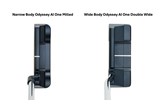 An image to show the difference in size between a narrow and wide body blade putter
An image to show the difference in size between a narrow and wide body blade putter
-
 A graphic to show the multi material construction and reduced twisting effect of the PXG M16 Stability putter shaft
A graphic to show the multi material construction and reduced twisting effect of the PXG M16 Stability putter shaft
-
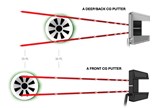 A graphic to show that front CG putters are more accurate than back CG models
A graphic to show that front CG putters are more accurate than back CG models
-
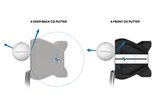 A graphic to show how a back CG putter rotates around a bigger arc than a front CG putter
A graphic to show how a back CG putter rotates around a bigger arc than a front CG putter
-
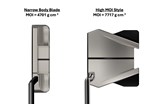 A graphic to show the difference in body shape between a narrow body blade putter and an MOI model
A graphic to show the difference in body shape between a narrow body blade putter and an MOI model
-
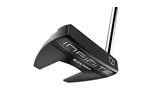 The sole detail of the Wilson Infinite Bucktown Putter
The sole detail of the Wilson Infinite Bucktown Putter


